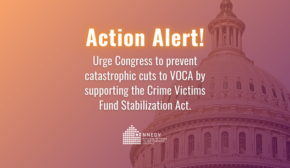Connecting Domestic Violence and Sexual Assault
April 28, 2016
As Sexual Assault Awareness Month (SAAM) draws to a close, the National Network to End Domestic Violence (NNEDV) would like to thank our colleagues who advocate for survivors of sexual violence, and address the myth that sexual assault and domestic violence are completely separate issues.
Although the majority of rape victims are assaulted by someone who is not a current or former intimate partner, victims of domestic or dating violence are often sexually violated by their abusive partner as a tactic of abuse. “Forced sex, even by a spouse or intimate partner, is an act of aggression and violence. Furthermore, people whose partners abuse them physically and sexually are at a higher risk of being seriously injured or killed.” [1] Unfortunately victims of domestic or dating violence who are raped by their abusers face biases and barriers when they talk about or report the crime; they often resist even acknowledging forced sex as the crime that it is.
This dynamic is even more pronounced for survivors who face multiple forms of oppression. Members of the LGBTQ community may fear heterosexist backlash in reporting sexual violence, especially if the perpetrator is a current or former partner. Communities of color, in which boys and men have disproportionate rates of law enforcement contact and incarceration, may not support women reporting a man from the community to police, even if she is a member of the same community. If assaulted by a current or former partner, she faces betrayal by her partner as well as pressure not to report the crime.
There exists a natural intersection between the work of domestic violence advocates and sexual assault advocates, with many serving victims of both. There are layers of social attitudes that impact the tolerance of physical and sexual violence. Together, advocates can address a system of cultural beliefs that perpetrators may not be to blame for their actions and that survivors could have somehow prevented the violence that was done to them. Standing together, we can better support all survivors.
—
[1] Melinda Smith, M.A., and Jeanne Segal, Ph.D, Domestic Violence and Abuse, available at http://www.helpguide.org/articles/abuse/domestic-violence-and-abuse.htm





